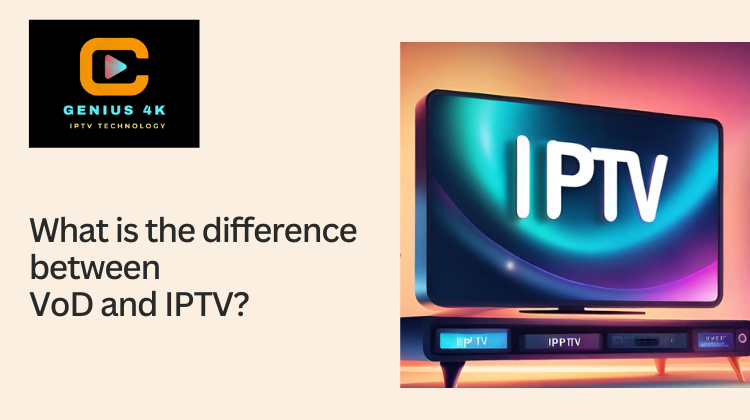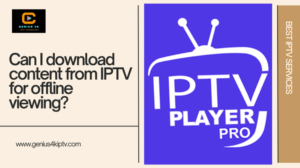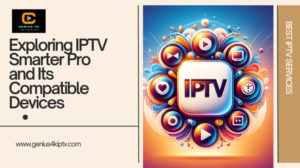Understanding the Differences Between VoD and IPTV
In the realm of digital media consumption, terms like VoD (Video on Demand) and IPTV (Internet Protocol Television) are frequently used but often misunderstood. Both technologies play pivotal roles in how audiences access and enjoy content, yet they serve distinct purposes and operate on different principles. This blog aims to elucidate the nuances between VoD and IPTV, exploring their definitions, functionalities, and practical applications.
What is Video on Demand (VoD)?
VoD refers to a content delivery system that enables users to select and watch video content at their convenience. Unlike traditional broadcast methods that adhere to fixed schedules, VoD allows viewers to access a vast library of movies, TV shows, documentaries, and other video content instantly. The essence of VoD lies in its on-demand nature, granting users control over when and how they consume media.
Key Characteristics of VoD:
- Content Accessibility: VoD platforms host extensive libraries of multimedia content, accessible through streaming services like Netflix, Hulu, Amazon Prime Video, and proprietary services offered by cable and satellite providers.
- Instant Playback: Users can initiate playback of their chosen content immediately upon selection, facilitating a personalized viewing experience that aligns with individual schedules and preferences.
- Flexibility and Control: VoD empowers viewers with playback controls such as pause, rewind, and fast-forward, enhancing interactivity and user engagement.
- Content Types: VoD encompasses a wide array of content genres, from blockbuster movies and TV series to educational videos and niche documentaries, catering to diverse viewer interests.
Exploring Internet Protocol Television (IPTV)
IPTV represents a distinct method of delivering television services over IP networks, leveraging the internet as a conduit for transmitting live TV channels and on-demand content to users. Unlike VoD, which primarily focuses on individual content items, IPTV encompasses a broader spectrum of television broadcasting and media distribution.
Key Characteristics of IPTV:
- Live TV Broadcasting: IPTV enables real-time streaming of television broadcasts, akin to traditional cable or satellite TV services, over broadband or other internet connections.
- On-Demand Content: In addition to live broadcasts, IPTV services integrate VoD functionalities, offering subscribers access to a comprehensive range of on-demand content, including movies, series, and archived programs.
- Interactive Features: IPTV platforms often include interactive features such as Electronic Program Guides (EPG), DVR capabilities for recording programs, and interactive applications that enhance user engagement.
- Network Infrastructure: IPTV relies on dedicated infrastructure and protocols optimized for delivering high-quality video streams, ensuring robust performance and reliability across varying network conditions.
Differentiating VoD from IPTV
While both VoD and IPTV leverage internet-based technologies to deliver multimedia content, several fundamental distinctions delineate their functionalities and applications:
- Content Delivery Model:
- VoD: Delivers individual video items upon user request, focusing on a personalized viewing experience with immediate playback options.
- IPTV: Distributes live TV broadcasts and on-demand content through scheduled programming and comprehensive channel lineups, catering to broader audience demographics.
- User Interaction:
- VoD: Empowers viewers with control over content selection and playback, enabling flexible viewing sessions tailored to individual preferences.
- IPTV: Offers interactive features such as live channel surfing, program recording, and interactive applications, fostering engagement beyond passive content consumption.
- Scope of Services:
- VoD: Primarily emphasizes on-demand access to movies, series, and other video content genres, curated within expansive digital libraries.
- IPTV: Encompasses a comprehensive suite of television services, encompassing live broadcasts, video-on-demand, interactive features, and supplementary multimedia applications.
- Technological Infrastructure:
- VoD: Relies on robust streaming servers and content delivery networks (CDNs) to ensure seamless playback and optimized performance across diverse devices and platforms.
- IPTV: Utilizes dedicated IP networks and specialized protocols tailored for delivering broadcast-quality video streams, maintaining reliability and scalability across large-scale deployments.
Practical Applications and Market Impact
Both VoD and IPTV have revolutionized the media landscape, offering audiences unprecedented flexibility and convenience in accessing digital content. From entertainment and education to corporate training and public broadcasting, these technologies have permeated various sectors, reshaping how content creators, distributors, and consumers interact with multimedia resources.
Market Dynamics and Consumer Adoption:
- Consumer Preferences: Increasing demand for personalized viewing experiences drives adoption of VoD platforms, fueled by extensive content libraries and user-friendly interfaces.
- Industry Evolution: IPTV continues to evolve, integrating advanced features such as multi-screen viewing, cloud-based storage, and interactive advertising to enhance viewer engagement and service differentiation.
- Global Expansion: The global reach of VoD and IPTV services extends across diverse geographical markets, reflecting diverse cultural preferences and consumption patterns.
Conclusion
In conclusion, while VoD and IPTV both represent pivotal advancements in digital media delivery, each technology offers distinct functionalities and applications within the broader ecosystem of content consumption. VoD excels in providing on-demand access to diverse video content, catering to individual viewing preferences and schedules. In contrast, IPTV encompasses a comprehensive suite of television services, combining live TV broadcasting with extensive on-demand libraries and interactive features. By understanding the nuances between VoD and IPTV, consumers and industry stakeholders can navigate the evolving landscape of digital media with informed decisions and strategic initiatives, harnessing the transformative potential of these innovative technologies.
For those interested in exploring IPTV services further, providers like Genius4K IPTV (https://genius4kiptv.com/) offer tailored solutions designed to enhance the viewing experience with robust content offerings and reliable service delivery across Canadian markets and beyond.





